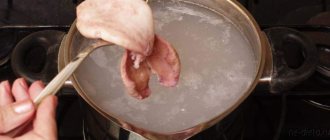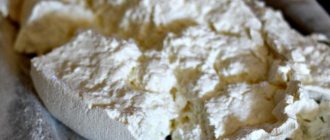Why do you need to germinate grains?
When a sprout begins to hatch in the seeds, this activates all processes in them. The resulting greens are rich in minerals and vitamins. You can get sprouts from any grain: wheat, rye, barley, oats. And also from legumes: lentils, peas, chickpeas, beans.
Flax, pumpkin, and sunflower seeds are also suitable. Each of these plants has health benefits in its own way, but wheat is the most popular due to its simplicity and availability.
Sprouting grain crops can serve a variety of purposes, depending on the method and duration of the process.
- For food. Greens are useful to eat, especially in winter, when there are not enough fresh vegetables and fruits in the diet. Wheat grains are especially valued by vegetarians and raw foodists.
- For medicinal purposes. Sprouted cereals have a positive effect on the body, enhance metabolic processes and protective functions, and activate the gastrointestinal tract.
- As a cosmetic product. Skin care products are prepared on the basis of grains: masks, lotions, “washes”.
- For pets. This “grass” is often cultivated for cats that do not go outside. They need it to get rid of fur that gets into their stomach.
- For decoration as an alternative to flowers. Greenery in pots refreshes any room; it is not fussy and requires minimal care. At the same time, it pleases the eye and purifies the air.
- For educational and entertainment purposes for children . Watching the development of plants is a very fascinating process.
On an industrial scale, grains are sprouted to produce malt. In this form, it is easier for microorganisms (yeast) to ferment carbohydrates, which is used in the production of alcohol and beer.
Benefits and harms of consumption
Grains with sprouts contain many nutritional components. Due to the activation of growth processes in grain, the amount of proteins and fats significantly increases, and the proportion of fiber increases. On the contrary, there are fewer carbohydrates. If you add a rich vitamin and mineral composition to this, you get a valuable product.
Sprouted wheat grains have the following beneficial properties:
- activates metabolism;
- promotes weight loss;
- increases immunity;
- has a general strengthening effect;
- stabilizes the functioning of the digestive system;
- improves the condition of skin, nails and hair;
- removes toxins and waste.
The benefits of sprouted wheat
Wheat germ is rich in vitamins A, B and E, as well as vitamin D. In addition, they contain 18 amino acids. Few products can boast such a rich composition. Sprouted wheat grains contain all useful components in the form that is most easily absorbed by the human body. This is explained by the fact that for the subsequent development of the sprout, all the nutrients in the grain are broken down.
In addition to everything listed above, this product contains many polyunsaturated fatty acids, as well as potassium, magnesium, calcium, iron, phosphorus and other trace elements. In addition, sprouted wheat is one of the most effective sources of fiber.
The main active ingredient of wheat germ is octcosanol or germ oil. It actively removes harmful cholesterol from the body and is an excellent source of vitamin E. Sprouted wheat should be consumed for prevention and general strengthening of the body, as well as as an auxiliary therapy in the treatment of a number of diseases:
- to normalize metabolic processes
- detoxification
- improving intestinal microflora
- increasing resistance to cold
- improved vision
- to saturate the blood with oxygen
- neutralization of inflammation
- wound healing
- fight against infections.
Sprouted wheat is especially useful for the fair sex; its benefit for women is to prolong youth. The skin becomes fresher, more radiant, many even notice how fine wrinkles are smoothed out. All of the above beneficial qualities make wheat sprouts a valuable element of a healthy diet. But, you need to know how to germinate them correctly and then use them.
In the next video you will learn about the dangers and benefits of this food product.
How to choose wheat for germination
Cereals can be sold in a supermarket, at the market by weight, in specialized health food stores and in pharmacies. It is best to buy organic seeds for germination and the same substrate for them, if necessary. But this is the most expensive option.
At the market, cereals are much cheaper, but they can sell products there that were treated with pesticides during agricultural activities and storage. This point must be clarified with the seller.
What to look for when purchasing:
- The seeds must be the same size, shape and color.
- The presence of broken grains, flour or foreign black seeds is not allowed.
- The cereal must be fresh and stored for no more than 1 year.
- High-quality wheat does not allow the smell of dampness, a chemical tint, signs of mold, and especially the presence of moths and other pests.
Many manufacturers sell seeds in convenient bags with holes in which you can soak them and keep them directly in them until they hatch. For example, “Vkusville” wheat for germination is sold in a box containing 3 bags of 50 g each.
Germination technology
The method of cultivation depends on the purpose. There are two options:
- Obtaining sprouted grain with sprouts up to 2-3 mm. This product is eaten and added to various dishes. In this case, no substrate is needed.
- To prepare medicinal juice, for animals and as a green decoration for the room, grains are grown to grass 12-15 cm high. More often they are cultivated on a substrate (earth, sawdust).
In any case, you will need a container, preliminary preparation of the wheat and suitable conditions for the development of the embryo.
Container
The choice of container is determined by how much product you need to receive. The only option that is not suitable is metal utensils. How you can get wheat germ:
- Multi-tiered sprouters (sprouters). They are made of plastic or ceramic and allow you to simultaneously plant different seeds in significant quantities.
- Jars with lids made of mesh. You can also buy them or prepare them yourself by making holes in the nylon cover. You can simply cover the jar with gauze and tie it with an elastic band. They are installed at an angle with the neck down to allow excess water to drain.
- Any shallow container made of ceramic or plastic (plate, tray, tray). It needs a gauze cover.
- Special microfarms. They work automatically, but are quite expensive. Those who have already tried a diet with sprouts should think about installing such a unit at home.
If you need to get greens, you will need deeper containers or flowerpots with soil. An unusual decor can be obtained by growing grass in shells. It is filled with soil and seeds are sown. For convenience, the shells are placed in egg trays. If you paint it in different colors, it will turn out simply beautiful!
The soil
To cultivate any grain crops, store-bought soil intended for indoor flowers or seedlings is useful. If you take soil from the garden, you need to steam it in the oven or sprinkle it with potassium permanganate to destroy pests. The soil layer in the container must be at least 5 cm.
In addition to soil, coconut fiber, sawdust, woven materials (gauze, burlap), cotton wool, paper towels or napkins are used as a substrate.
Pre-soak
This is an important step that should not be skipped.
- First, you need to wash the wheat well. Remove any grains that float. They are skinny and will not hatch.
- After this, put the grain in a bowl or jar, add water so that there is about 3 times more of it than wheat.
- Leave to swell for 10 hours or overnight.
- After this soaking, drain the water and rinse the grain thoroughly.
Now the wheat is ready for germination.
The necessary conditions
Light as such is not needed to produce sprouts. Containers with soaked grain should not be exposed to the sun; they can be kept anywhere in the room or kitchen. The main thing is that they do not dry out and are always moist. Therefore, it is better to get a spray bottle to moisten the “beds”.
The optimal temperature for embryo pipping is 20-22 degrees.
When cultivating grass, after the greenery appears above the soil surface, it should be kept in a lighted place (on a windowsill), but without direct sunlight.
In the winter months, it is better to illuminate the beds with a phytolamp or fluorescent lamp; a regular incandescent lamp is not suitable for these purposes. As the greens grow, they are watered daily in the morning and sprayed in the evenings.
Conditions for successful cultivation
Watering
To grow a healthy crop, use organic soil for planting. To do this, you can use wet compost or other chemical-free soil mixture. The soil should be well moistened, but excess moisture should not be allowed. At the initial stage of growth, water in the morning, and in the evening before going to bed, do not forget to spray the sprouts a little. This is done so that the grains do not dry out at night. When the grass becomes large, water it once a day.
Lighting
Wheat needs light, but direct sunlight negatively affects the life of the plant. Therefore, the pot must be installed in a shaded place, or the shade must be created artificially using mesh fabric.
Temperature
Wheat cultivation should take place at a low temperature, preferably not to rise above 22-23 degrees.
Capacity
To sprout wheat, you can use a regular ceramic, glass or plastic baking tray.
If you are not just germinating grains, but want to grow green grass, then you will need an ordinary glass jar. The jar is closed with a lid with holes made in advance. Instead of a lid, you can take a bandage that is attached to the neck with an elastic band.
How to properly germinate wheat for food
You shouldn’t take a lot of cereal at one time, 1 glass is enough.
- Before germination, seeds should always be washed and soaked for 8-10 hours.
- After swelling, rinse the cereal again under running water in a sieve or colander.
- In a suitable wide container, place gauze folded in 4-6 layers or natural fabric (cotton, linen) at the bottom.
- Pour the cereal onto it. It must be placed in one layer, otherwise it will begin to warm up, suffocate, and will slowly germinate.
- Cover the top with a piece of gauze folded in 4-5 layers. It should be wet. Place the container in a warm, dark place.
- Every 6 hours, the cereal should be washed with cold water and drained. The liquid in the container should not stagnate.
- Under favorable conditions, the grains will begin to germinate within a day. The sprouts should not be more than 3 mm.
This product is stored in the refrigerator for no more than 2 days, covered with a damp cloth. If you didn’t manage to eat it on time, it’s better to dig the grains into the soil to get greens.
There is nothing complicated about how to quickly germinate wheat. The main thing is to ensure that the cereal does not dry out and mold or musty smell appears. This is why it is important to wash regularly.
Important!
To get 100 g of grains with sprouts, you need to take 70 g of cereal.
Errors during the germination process
Why can't I germinate wheat?
- A large amount of cereal is placed in a small container;
- When sprouts germinate, too much water is added or it is too hard;
- Drying of grains due to lack of liquid;
- Poor quality grain.
Experience is also important in how to germinate sprouts: grains swollen from overwatering are difficult to distinguish from germinating cereals.
Sprouting for treatment
For medicinal purposes, juice squeezed from green mass (grass) is used. To do this you need:
- Take a tray or pot, always with drainage holes at the bottom. Cover them with paper towels or napkins.
- Fill the containers with soil to about 5-7 cm in height.
- Spread the grains that have sprouted the first roots on the surface of the soil. You can simply use pre-soaked wheat, but then it will take a little more time.
- The grains must be laid out so that they touch, but in one layer. There is no need to leave large gaps between them.
- Water the prepared bed with water over the entire surface. Do not cover wheat with soil.
- Cover the top with paper (napkins, newspapers) folded in several layers or cloth. Moisten it well with a spray bottle.
- Raise the cover twice a day to ventilate and moisten the seeds. Keep this up for 4 days.
- After this, remove the shelter and grow for a week or 10 days in diffused light, watering once a day.
Cut the grass when it reaches 10 to 15 cm in height. It is most convenient to do this with scissors immediately before use. A second wave of greenery will soon appear in place of the cut one. For treatment, you should not try to grow a third crop: it will be tougher and not sweet.
Collection of sprouts
Cereal sprouts are cut off when they reach a height of 15 cm and begin to separate. Usually the harvest is harvested on the 9-10th day after sowing. The greens are cut with scissors just above the root.
It can be stored in the refrigerator for a week, however, it will be more useful to collect it just before use. After harvesting the first crop, wheat continues to be watered, since it can produce up to 3 harvests. But the greens of the 3rd harvest are no longer as juicy and sweet as those from the two previous cuts.
You can also learn about wheat germination at home from the following video:
Eating
Grains are digested rather slowly and are rich in carbohydrates, so they should be eaten in the first half of the day. The daily dose can be eaten at one time or divided into 2 meals (breakfast and lunch).
Before use, a portion of the product should be rinsed under running water and dried slightly. This will remove the not entirely pleasant grain smell.
The first time you should add no more than 1-2 tsp to the dish. product, eat for 5 days, and take a break on the weekend. Then gradually increase the dosage. By the end of the month you can reach a maximum of 70-100 g per day.
The grains must be chewed thoroughly. If this is difficult, then it is better to grind it in a blender or meat grinder and then add it to food. The product should not be subjected to heat treatment so as not to lose valuable components.
Recipes Using Wheatgrass
Grains with sprouts can be used fresh or dried and ground into flour. Here are some examples of dishes:
- The easiest way is to prepare cocktails and smoothies with this healthy ingredient. It is enough to chop two apples with 2 tbsp in a blender. sprouts You can choose a mixture of berries and fruits to taste.
- Add grains to a salad of fresh vegetables dressed with vegetable oil. Any set: cucumbers, tomatoes, peppers, herbs, apples, cabbage. Sprouts go well with all vegetables.
- The crushed seed (raw or dried) is good for use as a breading when frying meat, or added to cutlets instead of bread.
- For dessert, grind 3 tbsp. sprouts with honey and walnuts, taken 1 tbsp.
- For porridge you need to take 2.5 tbsp. sprouted wheat and oatmeal, pour a glass of boiling water over them and let stand for 20 minutes. Combine with berries or nuts to taste.
Small portions of chopped sprouts are added when baking cookies, bread, and muffins.
How to eat wheat germ
Many people are interested in how and with what to eat sprouted wheat? To provide the body with all the necessary substances, 3 tablespoons of sprouts is enough for a period of 24 hours. Before eating cereal, rinse it with water. It is advisable to eat sprouted grains at lunchtime. The “live” product must be chewed thoroughly.
- Marshmallow booties - step-by-step description for beginners
- How to make rips on jeans
- How to quickly get rid of worms at home
You can mix wheat sprouts with other grains (chickpeas, lentils, mung bean), because together legumes and grains are better accepted by the digestive system. Sprouted seeds are mixed with various dishes (porridges, salads, soups), eaten with nuts, honey, butter, and a variety of dried fruits. If the sprouts are not eaten immediately, place them in the refrigerator (store for no more than 2 days).
The simplest recipe for preparing sprouted wheat at home is to grind them using a blender along with vegetables or fruits. Wheat flatbreads are often prepared and are an excellent alternative to bread. Still ground sprouts can be added to fresh juice, which is prepared in a juicer, or to a nutritious smoothie. It is not advisable to mix this healthy cereal food with dairy products to avoid severe gas formation or even stomach upset.











